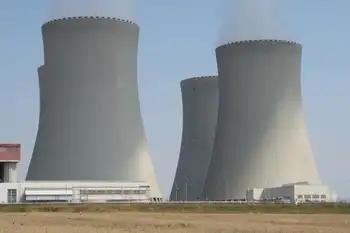Lower power demand could mean profit outage
By Orillia Packet & Times
CSA Z462 Arc Flash Training - Electrical Safety Essentials
Our customized live online or in‑person group training can be delivered to your staff at your location.

- Live Online
- 6 hours Instructor-led
- Group Training Available
At times, demand for power is so low the company has to turn off the turbines at its three hydroelectric generators or pay a penalty, something called "negative pricing."
"There's no question when the price goes down, the revenue tends to go down," OPC president John Mattinson said.
The City of Orillia, the sole shareholder of the OPC, is budgeting for a $1.5 million dividend from the power company this year.
Mattinson said it is too early to predict if there will be a significant revenue shortfall as a result of depressed power prices.
All hydroelectric producers are in the same boat, he noted.
The Ontario Waterpower Association, which represents OPC and other hydroelectric producers in the province, is negotiating with the Ontario Power Authority to resolve the issue of low and negative pricing, said Mattinson.
"It doesn't make a lot of sense when the government is promoting green power to ask existing generators of renewable energy to shut down."
Power in Ontario comes from a number of sources, including nuclear, coal, gas and hydroelectric. Like other commodities, it is bought and sold on the energy market.
Nuclear power plants are the least flexible, taking as many as three days to shut down and three to fire back up. When demand drops, it's cheaper for nuclear power producers to dump excess power into the market rather than go through a long shutdown.
With nuclear power flooding the market, there are fewer buyers for water power.
When the economy is humming, there is a general need for power from all producers. At times of intense need, such as heat waves when air-conditioners are all going full bore, capacity has almost been stretched to the limit.
But with the recession cutting industrial load and the cooler summer reducing the use of air-conditioning, demand is exceptionally low.
As early as April, the OPC was facing negative pricing, something chairman Larry Brooksbank described as a anomaly when questioned by city council.
But negative pricing has persisted through the summer, prompting discussions between the hydroelectric producers and the province.
Mattinson said it would make sense to have contracts that would offer some price protection for producers of renewable energy.
"We're optimistic we will have a contract that addresses the issue," he said.
City councillor Maurice McMillan first drew public attention to negative pricing in April.
The province needs to review its long-term energy strategy, particularly plans to expand nuclear capacity, he said.
Any policy that results in clean, non-polluting hydro-electric plants being forced to turn off generators and let water drain away uselessly is seriously flawed, McMillan said.
"It's the cleanest and cheapest power we can produce."
McMillan also worries the city could be in a tough spot if the revenue expected from the power company falls significantly below expectations.











